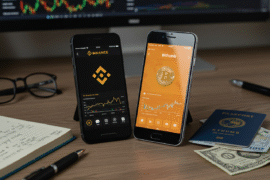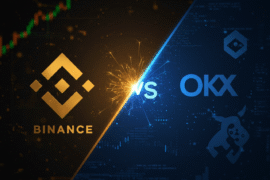This article may contain references to products or services from one or more of our advertisers or partners. We may receive compensation when you click on links to those products or services. Nonetheless, our opinions are our own.
The information presented in this article is accurate to the best of our knowledge at the time of publication. However, information is subject to change, and no guarantees are made about the continued accuracy or completeness of this content after its publication date.

Updated by Albert Fang
What is Waltonchain?
Waltonchain is a Chinese and Korean blockchain project targeted at transforming supply chain management. Named after Charles Walton, the inventor of RFID technology (most popularly used as “E-Z Pass”), WALTON is an acronym for Wisdom Alters Label, Trade, Organization, and Network. That meaning may be somewhat unclear, but the project definitely stays true to its namesake: Waltonchain’s primary function is taking data gathered from RFID tags and storing it on the blockchain.
The coin’s founders have extensive backgrounds in supply chain management and are homing in on simplifying several key issues, including better security, more accurate tracking, decentralization, and decreasing human effort. In theory, a business using Waltonchain could track every time a product was picked up, put down, tried on, bought, or returned—all without manually entering any data. Currently, Waltonchain is focusing on retail clothing as a first use case.
How does Waltonchain work?
Waltonchain, at its most basic, is RFID tags and a blockchain. The RFID tags on products are read by sensors, and the received data is stored on a decentralized ledger, allowing users to find an item’s history by looking up its unique blockchain ID.
What makes it different from existing supply chain technologies? Waltonchain itself isn’t doing anything new. Rather, it is taking existing tracking technologies and making them easier to secure, less labor-intensive, and more standardized.
“Waltonchain” actually refers only to the main blockchain. One of the project’s most important features is subchains, which can be branched off of the main chain and closed off by their owners to keep the data confidential. This way companies can customize their subchains to their needs, and the main blockchain doesn’t get bogged down by processing all the transactions going on in each subchain.
Similarly, Waltoncoin (WTC) is only used on the main blockchain. Each subchain will be able to generate its own token for tracking and data gathering, but there will still be plenty of demand for WTC as a way to exchange tokens between subchains and participate in the overall operation of the blockchain.
How to buy Waltonchain at a legit cryptocurrency exchange?
The most popular and well-respected cryptocurrency exchanges are Coinbase, Binance, and Crypto. They have been in the industry since the inception of crypto. To buy the crypto you are looking for, simply register for any of the cryptocurrency marketplaces below and claim the bonus sign-up offer as well.
Recent major developments
Waltonchain and other Chinese/Korean coins are becoming more stable as fear of government crackdowns lessens. Indeed, Waltonchain has entered into several partnerships with Chinese government entities, which may be a good sign for its regulatory future.
New partnerships seem to be coming all the time, primarily from China and Korea. Most recently, Waltonchain announced a partnership with China Mobile IoT Alliance, a large consortium of Chinese companies dedicated to Internet of Things research and development. They have also invested in Coinnest, one of the largest Korean cryptocurrency exchanges, in an effort to expand their share in that market and build a more global base.
How to buy Walton
Walton’s coin is mostly bought and sold on Binance. You can’t buy it with fiat currency yet (USD), so here is a quick guide on how to buy Walton starting with fiat:
1. Buy Bitcoin or Ethereum at an exchange that uses your fiat currency on Coinbase.
2. Transfer your BTC or ETH to an exchange that supports Walton. Currently, Binance is the best choice. (Tip: if you bought BTC/ETH on Coinbase, look into using GDAX to avoid transfer fees)
3. Buy Walton by trading your BTC/ETH for their coin, and you’re done!
Fun fact
Waltonchain’s CEO, Mo Bing, was working at Samsung when one of his friends began mining Bitcoin, which sparked Bing’s interest in cryptocurrencies. Inspired by his work interfacing hardware and software at Samsung, Bing decided to develop a blockchain-centered around RFID tags.

Reviewed and edited by Albert Fang.
See a typo or want to suggest an edit/revision to the content? Use the contact us form to provide feedback.
At FangWallet, we value editorial integrity and open collaboration in curating quality content for readers to enjoy. Much appreciated for the assist.
Did you like our article and find it insightful? We encourage sharing the article link with family and friends to benefit as well - better yet, sharing on social media. Thank you for the support! 🍉
Article Title: How to Buy Waltonchain with Crypto.com Crypto Exchange
https://fangwallet.com/2018/01/27/what-is-walton-wtc-coin-for-dummies-beginners-guide/The FangWallet Promise
FangWallet is an editorially independent resource - founded on breaking down challenging financial concepts for anyone to understand since 2014. While we adhere to editorial integrity, note that this post may contain references to products from our partners.
The FangWallet promise is always to have your best interest in mind and be transparent and honest about the financial picture.
Become an Insider

Subscribe to get a free daily budget planner printable to help get your money on track!
Make passive money the right way. No spam.
Editorial Disclaimer: The editorial content on this page is not provided by any of the companies mentioned. The opinions expressed here are the author's alone.
The content of this website is for informational purposes only and does not represent investment advice, or an offer or solicitation to buy or sell any security, investment, or product. Investors are encouraged to do their own due diligence, and, if necessary, consult professional advising before making any investment decisions. Investing involves a high degree of risk, and financial losses may occur including the potential loss of principal.
Source Citation References:
+ Inspo











































